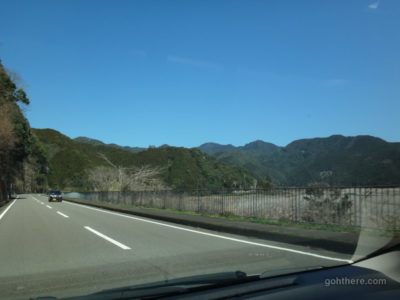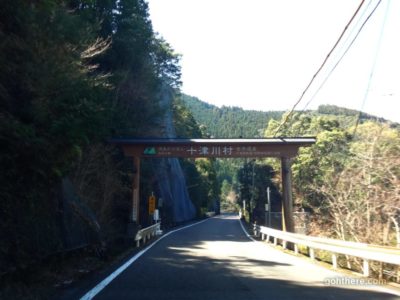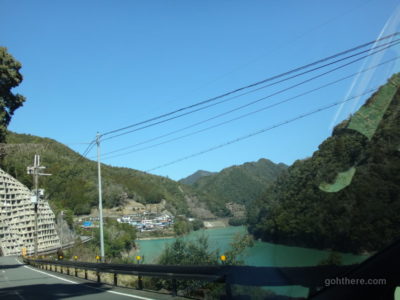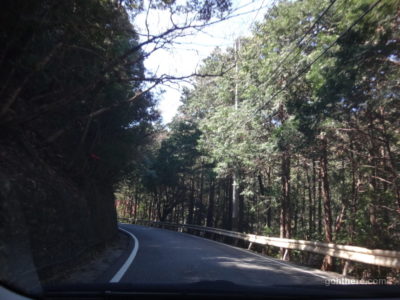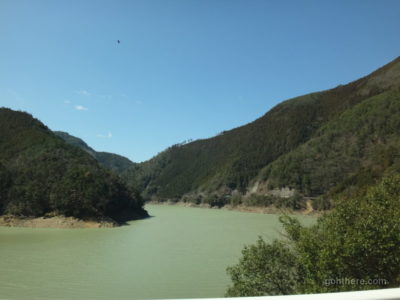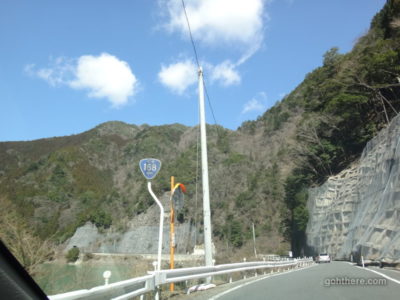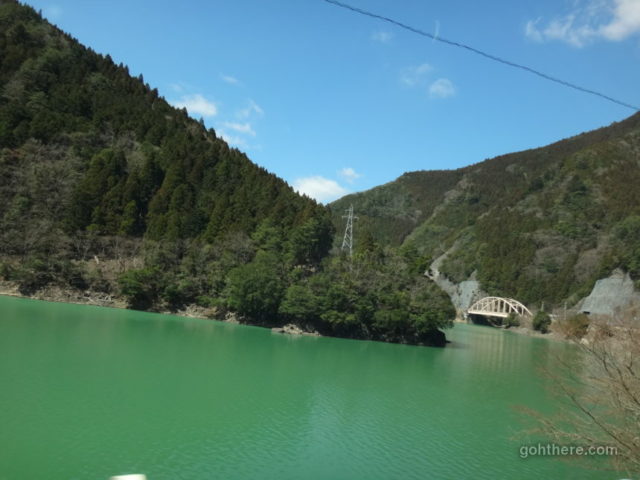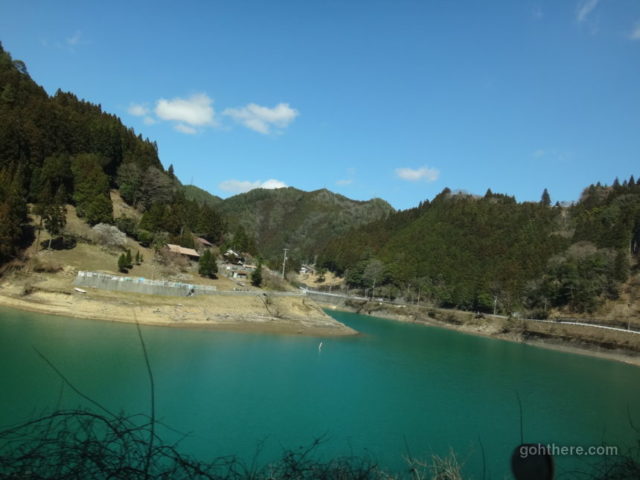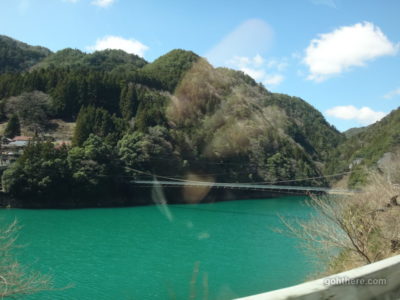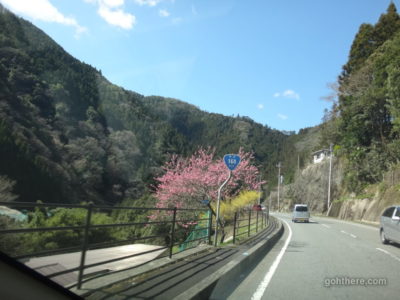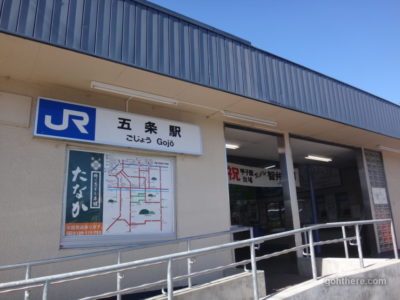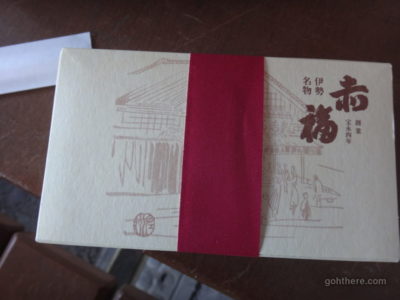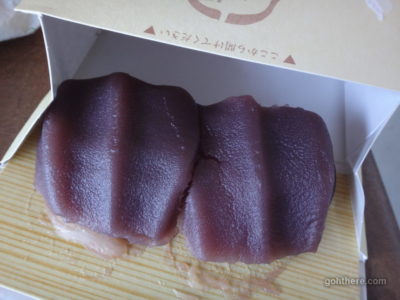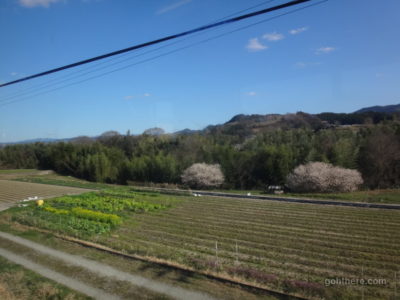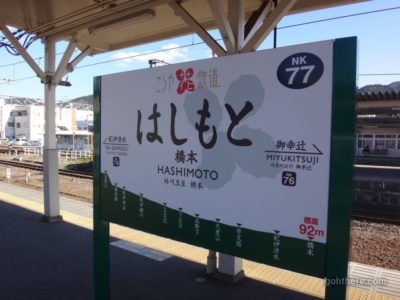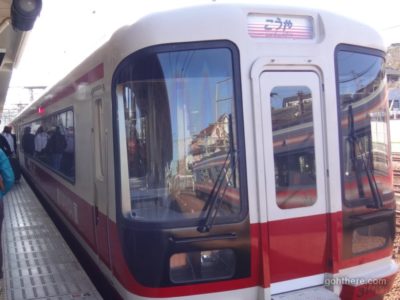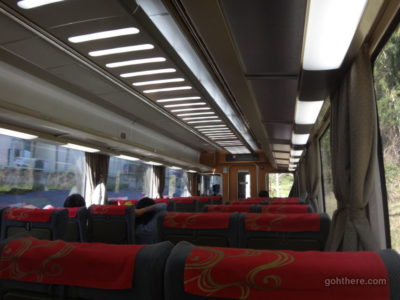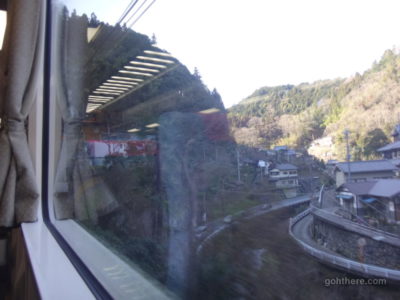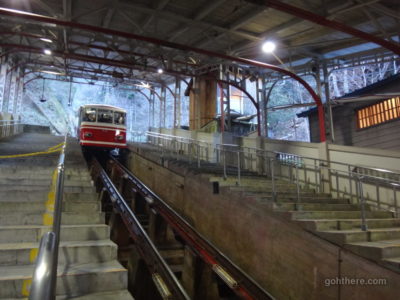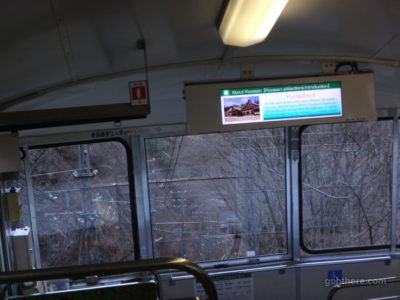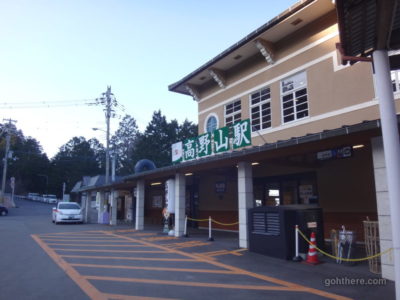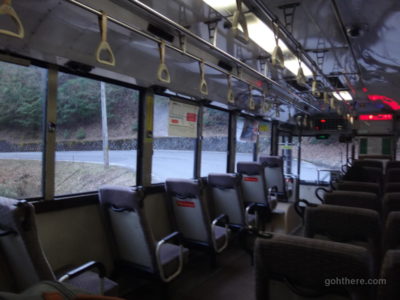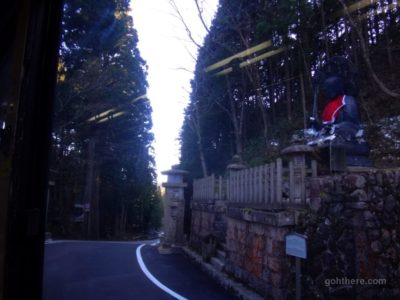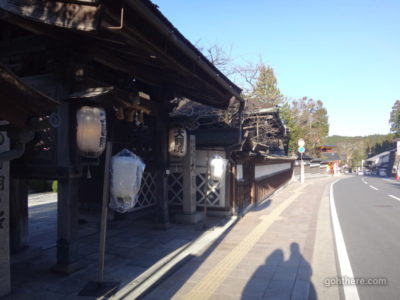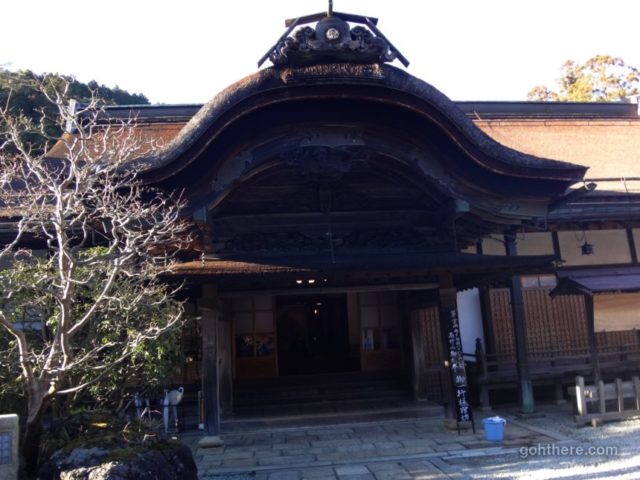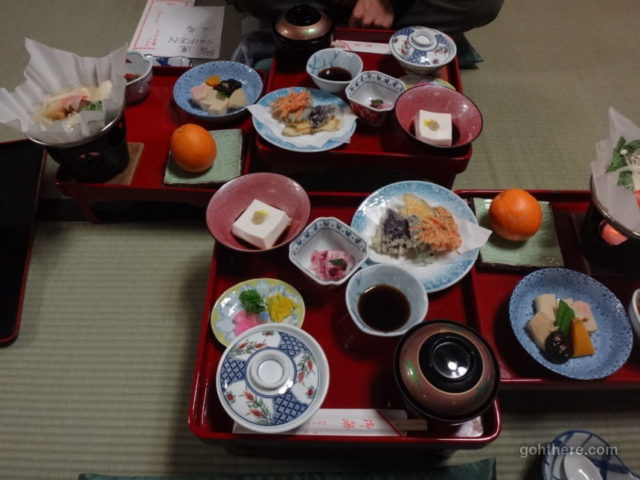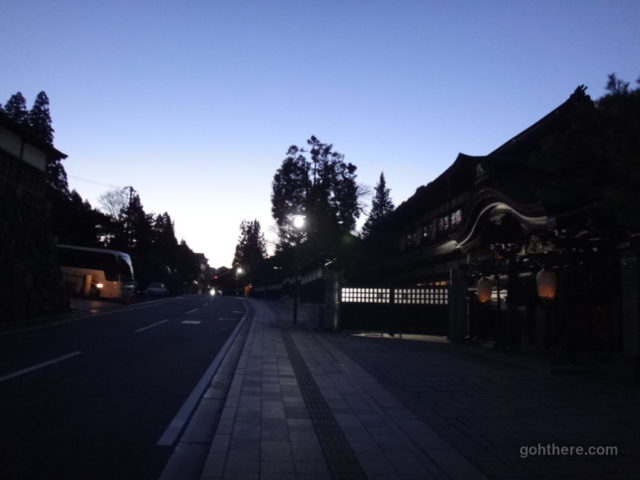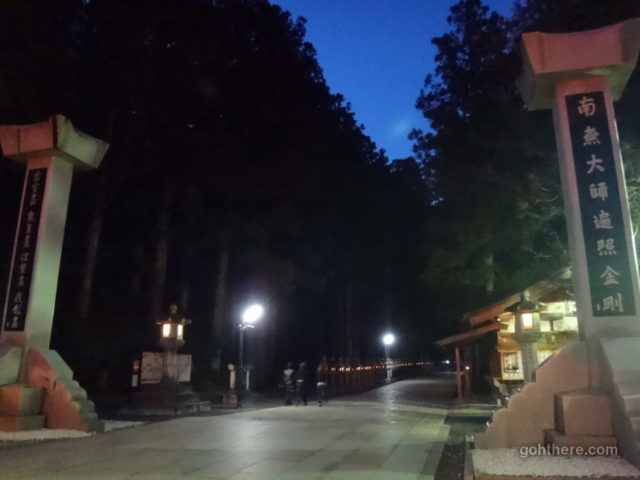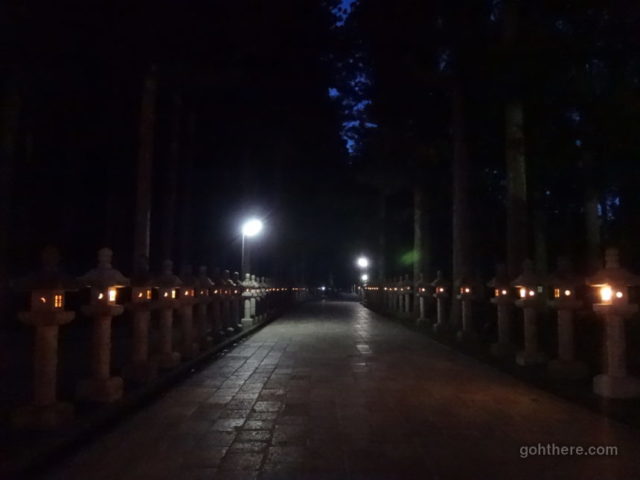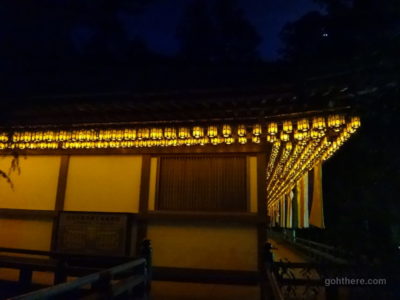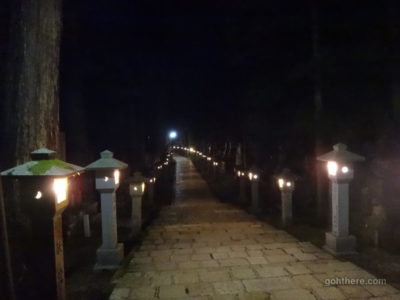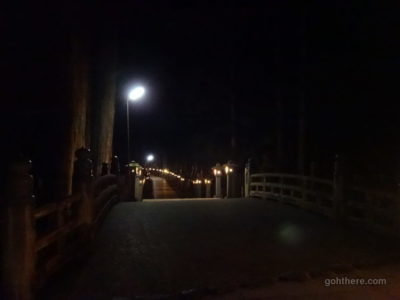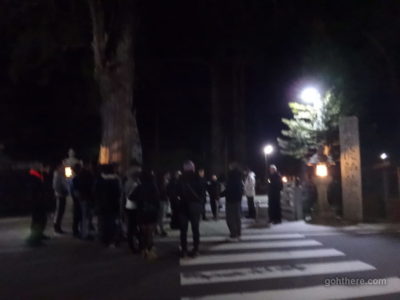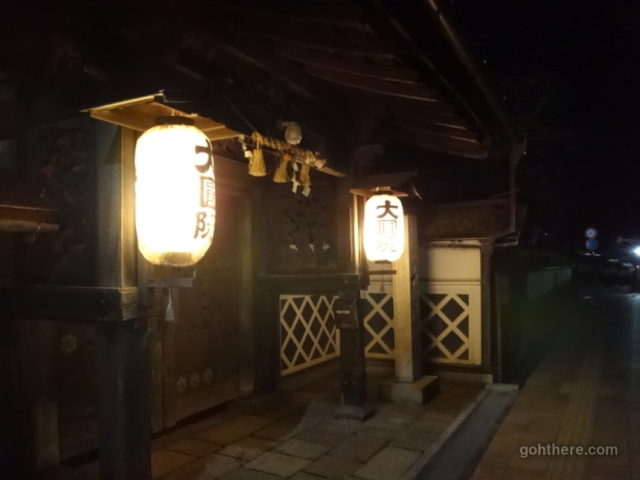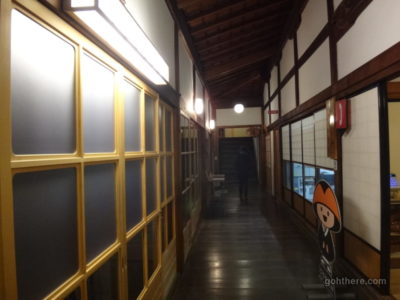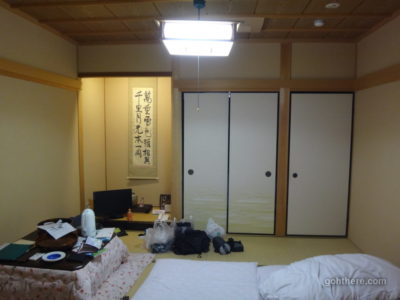After visiting Kumano Hongu Shrine, we continued driving north on Route 168, heading for Gojo. There we would change to public transport, which is the most convenient way to reach Koyasan.
This part of Route 168 runs through the middle of the Kii Peninsula (紀伊半島) in a mountainous area, alongside the Totsukawa (十津川) River. Scenery on the way was great, but even though it’s classified as a national highway, given its rural location there are still many sections of narrow one-way roads. Various widening works could be seen on the way, so the situation should gradually improve. Another challenge is occasional closure of the route due to landslides. As of time of writing, it had already been closed twice so far this year. It’s recommended not to use this route (or in fact, any similar routes in the area) during heavy rain.
To head north, there’s also the Route 371 which goes straight to Koyasan. It has some good sections with good road conditions and great scenery, in particular the Ryujin Skyline (龍神スカイライン) which used to be a toll road. But to get there from our starting point would require cutting to the west on Route 425. This is widely considered as one of the “three worst national highways in Japan”. We’d pass.
- Good road condition to start with…
- In the Totsukawa (十津川) region.
- Along Totsukawa River
- One-way. At least they have guard rails…
- Totsukawa (十津川) River. It’s pale green here but the colour changes upstream.
- Route 168 sign. Some concrete reinforcement on the slope.
- Suspension bridge.
After the 100 km drive our rental car emerged with a few scratches. We bid farewell to it at the rental car shop branch at Gojo (五条), and changed to local JR train heading to Hashimoto (橋本), which is where the express train to Koyasan departs from.
There is actually another rental branch at Hashimoto, but due to the way the rental drop-off charge plan works, as we started from Mie Prefecture, Gojo being in the adjacent Nara Prefecture is much cheaper than Hashimoto, which is in Wakayama Prefecture. And of course, once we are in urban roads there’s risk of getting caught in a traffic jam; no such concern with rail.
- Gojo JR station (五条駅). We had some time to kill before the next train, but there wasn’t much nearby to see or eat.
- Some sweets we bought back in Ise. Akafuku (赤福) is a popular souvenir there.
- Made from red bean paste.
- On the local train
Mount Koya / Koyasan (高野山)
The small settlement on Mount Koya consists of mainly Buddhist temples and other historical sites. It’s probably the most popular for temple stay. There is also a university (高野山大学) there, and many of the students (young monks) there serve guests at the temples as part of their training.
It’s easiest to travel to Koyasan by public transport. The first leg is by train. There are direct ones departing from Nanba (なんば) in Osaka, but regardless of which lines you transfer from, all trains bound for Koyasan make a stop at Hashimoto. From there it’s about 45 minutes to the Gokurakubashi (極楽橋) station changing to cable car, terminating at Koyasan station. It is then another change to bus or taxi to reach the Koyasan temple town.
We used the Koyasan World Heritage pass (高野山・世界遺産きっぷ) which is good value. It’s valid for 2-day, covering the full train journey, cable car and unlimited bus ride in the Koyasan area. It also includes some discount for admission fee of various places. The price is different depending on the departure point; for us from Hashimoto, the pass cost 2520 yen.
It’s also possible to reach Koyasan by car (such as via Route 371 mentioned earlier). But most require going through some narrow mountainous roads, and, parking is not really convenient in Koyasan town itself. In any case, all the main points of interests are covered by buses (popular ones are more frequent), and of course, if time is available, walking is a good option to see everything.
- Hashimoto station. The line on the bottom shows stations on the way and the altitude gain towards Koyasan.
- Koya express train (こうや)
- Inside the Koya train.
- Next leg is the cable car.
- Looking down from the cable car.
- Koyasan cable car station, change to either bus or taxi. It should take 10 minutes to reach the Koyasan town area. On the way we saw the odd traveller walking, but note that it’s forbidden on that stretch of the road. Because it is already too narrow for the bus! (our bus driver called him over and gave him a ride anyway – so kind)
- Twist and turn. There are buses coming the opposite way as well. Some good driving technique.
- Almost there. Greeted by buddha statue.
- Our stay tonight at Daien Temple. (大圓院). Check-in is before 5pm, we made it with 15 minutes to spare.
- Daien Temple (大圓院) main building.
- Dinner a 6 pm. The famous Shojin-ryori (精進料理) – vegetarian dishes for the monks. Highly praised by the Japanese. We liked the novelty factor, but the taste… not really our cup of tea.
Okunoin (奥の院) night walk
One of the most important historical sites in Koyasan is the Okunoin (奥の院). There are countless tombstones there, many of them of prominent figures in history, such as Hideyoshi Toyotomi (豊臣秀吉) and Nobunaga Oda (織田信長) from the Sengoku period (戦国時代). Many big corporations and rich people also claim their spots here, as it is considered a sacred place.
Visiting Okunoin at night is an interesting experience (for those who don’t mind walking in a graveyard at such time). In fact, it’s getting more popular that one of the temples organise a paid night tour with both Japanese and English guides. We opt for a quiet walk by ourselves.
- We took a bus and got off at the Okunoin-mae (奥の院前) stop, and started our walk from Nakanohashi (中の橋). It is shorter from here (1 km) to reach the innermost area, the temple of Kobo-daishi (弘法大師), the founder of the Koyasan settlement.
- Atmospheric walk at night.
- Near Kobo-daishi’s temple. Turning back here.
- We returned via a different route, to the Ichinohashi (一の橋) entrance which is 2 km walk.
- On our way back, we came across the night tour group.
- Back at Daien Temple.
- Our room. It’s really no difference from a normal ryokan, despite it being in a temple.
Morning service tomorrow would be before 6 am. We had to sleep early!
